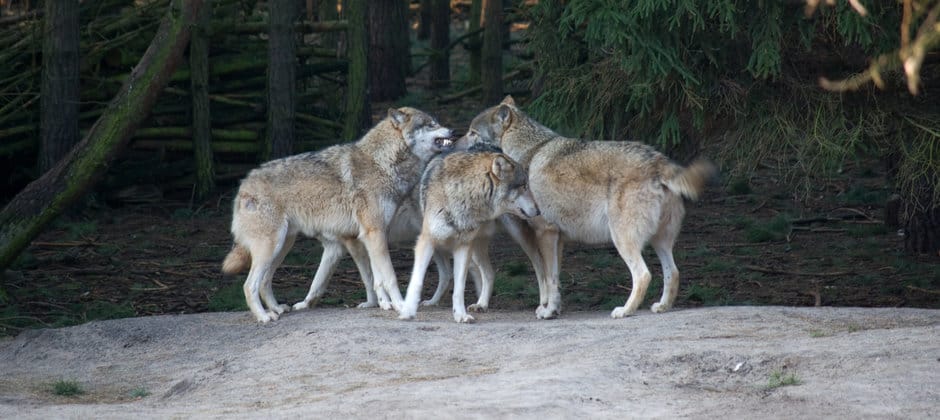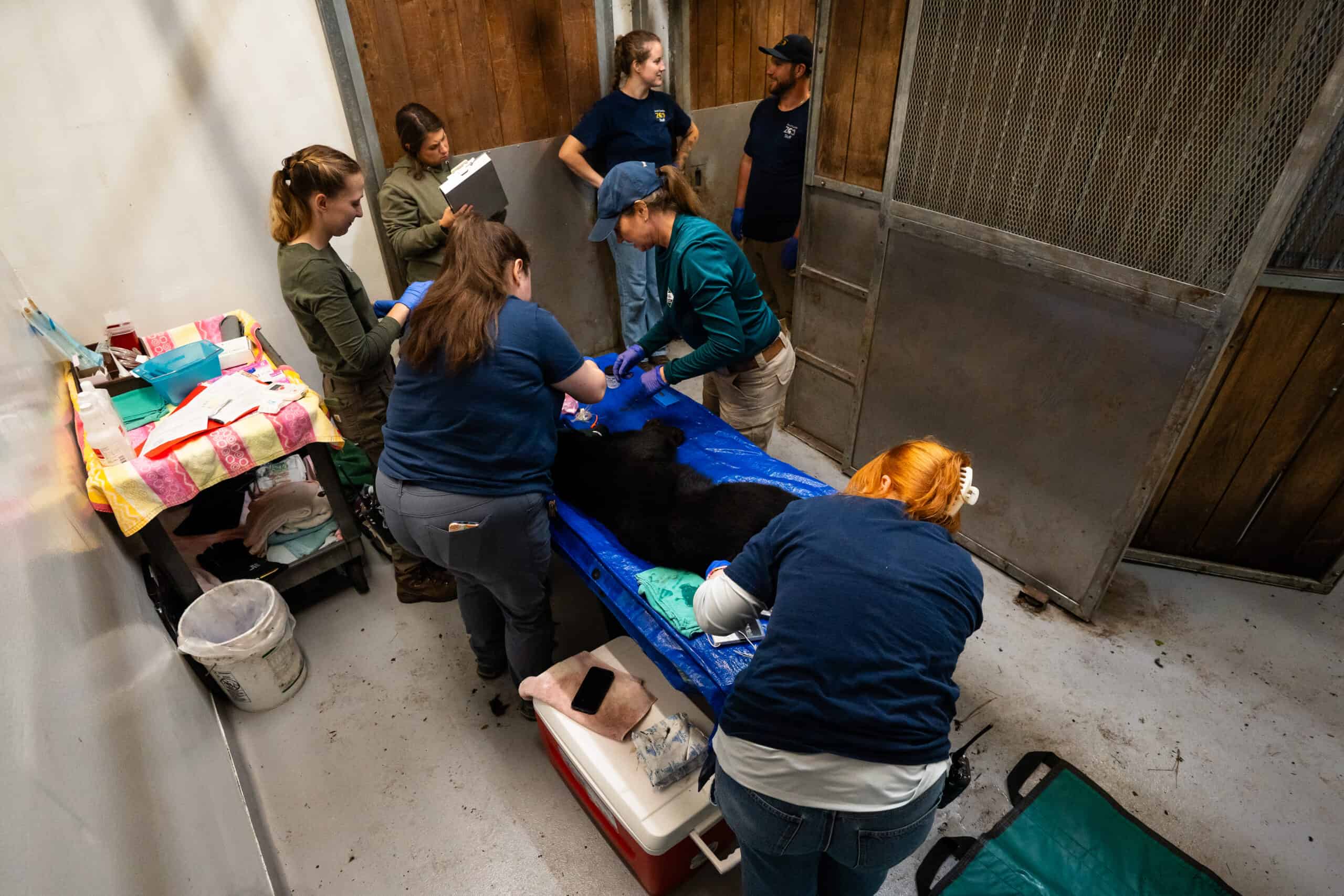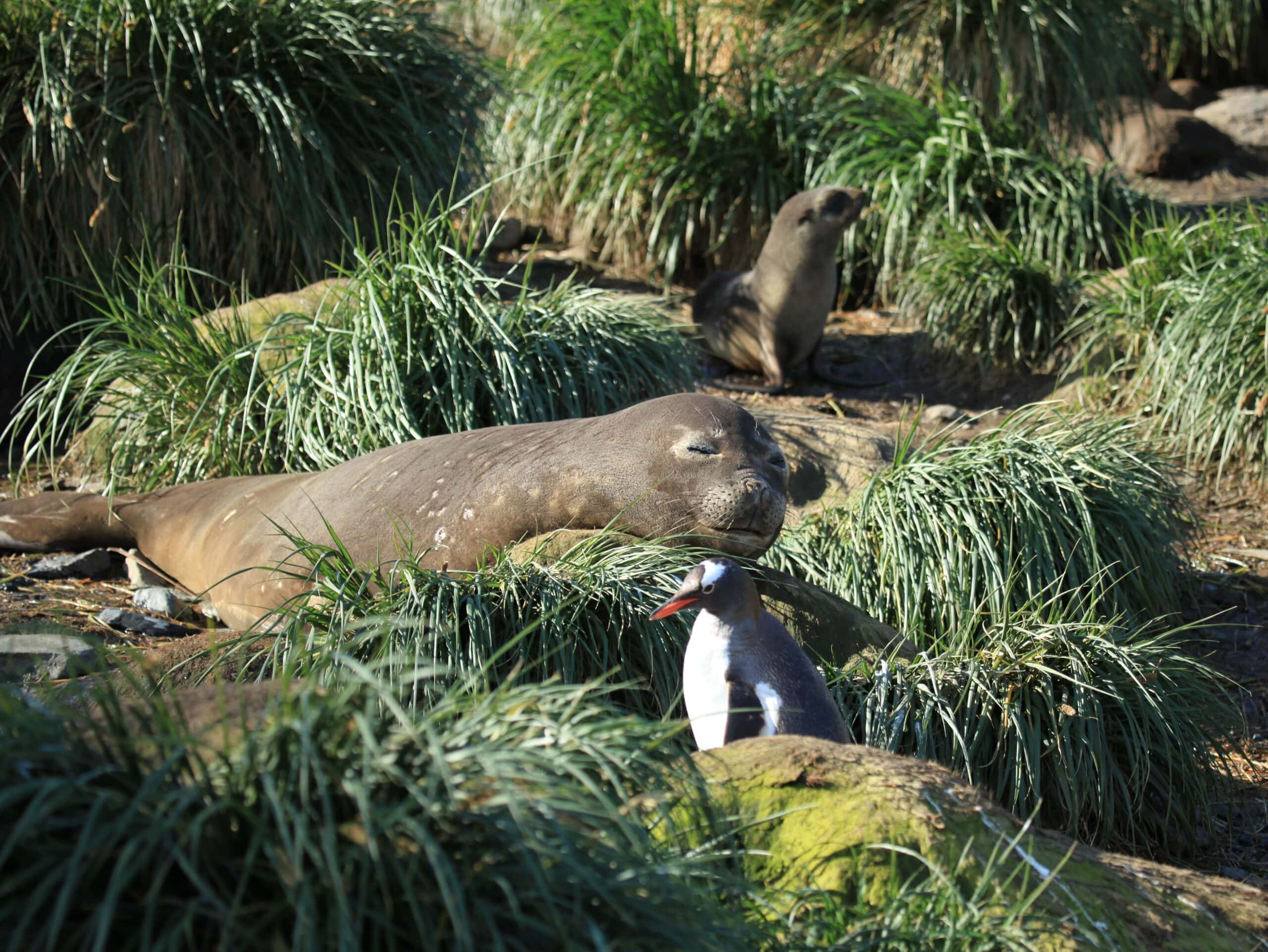Share this article
Researchers study wolf howls by joining in the chorus
When Sarah Bassing and her colleagues wanted to know what parts of their study areas were occupied by wolves, they asked them.
“We would go to these random sites and howl and listen to their responses,” said Bassing, a PhD candidate in environmental and forest sciences at the University of Washington. “Every once in a while we would get lucky and get a howl back.”
That made her and her team curious about the dynamics of gray wolf (Canis lupus) howling at their sites in Alberta and Idaho. So after practicing their howls, they set out on a multi-year dialog with their research subjects.
“It’s kind of like singing. You have to do it from your diaphragm,” Bassing said. “You’d lose your voice pretty quick if you were howling from your throat and not from your chest.”
She and her colleagues howled at wolves from mid-June through mid-August in Idaho from 2007 to 2018 and in Alberta from 2012 to 2014. They howled at different times of the day. They recorded the times and environmental conditions when they received responses from the wolves (and when they didn’t), and they collected scat samples to analyze the DNA for clues to the size of their packs and the ages of their pups.
Their results, published recently in a study in Ethology, showed that wolves tended to respond more to their howls in the early morning than during the daytime or early evening. Wolf activity tends to be crepuscular — concentrated around the dawn and dusk periods. Wolves typically come back from hunting in the early morning, Bassing said, so they might be more likely to howl then to locate their pack or others.
Smaller packs were more likely to respond to howls than larger packs, she said, possibly because pup in those packs may be more eager to seek out adults, whether for safety or just for the sake of socializing with the adults. Another possibility is that wolves in larger packs may be more used to hearing their pack mates, and may be lazier to respond immediately to an outsider’s howls.
Bassing and her colleagues also learned a few ways to get wolves to respond to their howls — techniques wildlife managers could use to detect wolves. While many researchers only use a set of three howls, she said, she and her colleagues found wolves were more likely to respond to longer sets of howls.
“The more you howl, the more you are going to be confident if there are or aren’t wolves in a given area,” she said.
Header Image: Wolves are more likely to howl when the conditions are right. Credit: Rerun van Pelt








